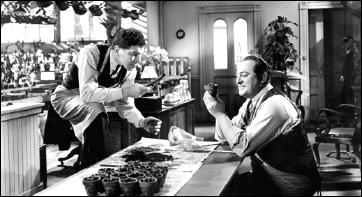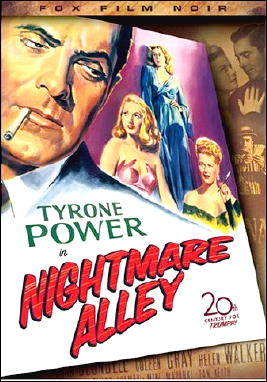July 2010
Monthly Archive
Wed 21 Jul 2010
A 1001 MIDNIGHTS Review
by Marcia Muller:
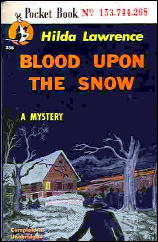
HILDA LAWRENCE – Blood Upon the Snow. Simon & Schuster, hardcover, 1944. Hardcover reprint: Detective Book Club, 3-in-1 edition: February 1945. Reprint paperbacks: Pocket 336, February 1946; Avon Classic Crime PN320, 1970.
Hilda Lawrence wrote three novels featuring the odd investigative trio of private eye Mark East and spinster sleuths Bessie Petty and Beulah Pond. In addition, she published a melodramatic suspense novel, The Pavilion (1949), and two novellas, “Death Has Four Hands” and “This Bleeding House” (both 1950).
She is best known for the East/Petty/Pond books, and for good reason: They present an interesting juxtaposition of the hard-boiled school versus the little-old-lady sleuth, between the customs and mores of Manhattan and those of a small New England village.
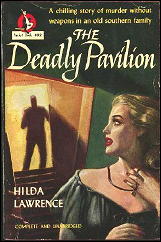
The characters are well drawn, the setting evocative, and the interplay between Mark East and his elderly “Watsons” is entertaining.
As this first entry in the series opens, the snow is falling and Mark is arriving at the village of Crestwood. His introduction to Beulah Pond occurs when he stops to ask directions to the house where a prospective client expects him.
When he eventually arrives, he is told he must wait until morning for his interview; and when he meets with Mr. Stoneman, the old man seems to think he is hiring a private secretary rather than a private detective. Mark, however, senses something is very wrong in the house; the old man seems frightened and has a hurt wrist and bruises on his face.
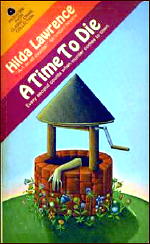
He agrees to stay on for a few days, assuming secretarial duties, and makes it his first order of business to revisit Miss Pond, whom he perceives — rightly so — as a woman who knows a great deal about what goes on in the village.
When he arrives at her home, he is introduced to Bessie Petty, and the unlikely partnership in detection is launched.
The story that follows is one of slowly rising terror. The people with whom Stoneman is staying, Laura and Jim Morey and their two children, also seem disturbed; Stoneman is reported to have been sleepwalking; the housekeeper, Mrs. Lacey, has handed in her notice and seems upset about this; strange mischief has occurred in the wine cellar; and as the black winter night closes in, Mark remembers something Mrs. Lacey said about this being “good soil for evil.”
A slow-paced but absorbing chiller, as are the other two in the series — A Time to Die (1945) and Death of a Doll (1947).
———
Reprinted with permission from 1001 Midnights, edited by Bill Pronzini & Marcia Muller and published by The Battered Silicon Dispatch Box, 2007. Copyright © 1986, 2007 by the Pronzini-Muller Family Trust.
Tue 20 Jul 2010
THE BACKWARD REVIEWER
William F. Deeck
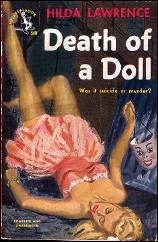
HILDA LAWRENCE – Death of a Doll. Simon & Schuster, hardcover, 1947. Hardcover reprint: Detective Book Club, 3-in-1 edition, April 1947. Paperback reprints include: Pocket #540, August 1948; Avon Classic Crime PN239, November 1969.
Only temporarily is Ruth Miller, department-store clerk, happy with her move from a furnished room to Hope House, a Home for Girls. Upon entering the lobby of her new domicile, she is frightened by a face from the past. Miller makes plans to get away, but her assisted plunge from a seventh-floor window renders her schemes nugatory.
A wealthy customer of the department store who liked Miller hires Marc East to investigate because the death is being treated as a suicide. Reluctantly, for he also thinks the death was self-inflicted, East begins checking out Hope House and its denizens.
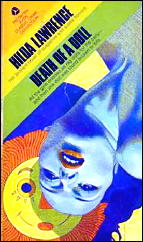
More and more evidence, including the bludgeoning of a young lady in one of the bathrooms, accumulates to persuade East that Miller was murdered.
More or less aiding East are Beulah Pond and Bessy Petty, who are visiting the wealthy customer and who are acquainted with East through some of his earlier investigations. They are a delightful pair, despite Bessy’s slight problem with alcohol. On one occasion, just in case someone might be listening, Bessy spells out a word.
Often I have problems with people who are in danger, real or fancied, and who dimwittedly attempt to avoid any risk by keeping quiet. Hilda Lawrence convinces here. Miller, the residents, and the help of Hope House conceal information, but persuasive reasons are presented. This novel should not be missed.
— From The MYSTERY FANcier, Vol. 11, No. 2, Spring 1989.
Bibliographic Data: Hilda Lawrence was the pen name of Hildgarde Kronmuller, 1906-1976. There are five novels or story collections by her in the Revised Crime Fiction IV, by Allen J. Hubin. Her series character Mark East is in three of them (so indicated by ME). Note that her books often underwent title changes when republished, and that the two long novelettes in Duel for Death have been reprinted individually.
* Blood Upon the Snow (n.) Simon 1944 [ME]
* A Time to Die (n.) Simon 1945 [ME]
* The Pavilion (n.) Simon 1946
* Death of a Doll (n.) Simon 1947 [ME]
* Duet of Death (co) Simon 1949
Tue 20 Jul 2010
Posted by Steve under
Reviews[3] Comments
A REVIEW BY CURT J. EVANS:
CARTER DICKSON – The Reader Is Warned. William Morrow & Co., US, hardcover, 1939. Wm.Heinemann, UK, hc, 1939. Reprinted many times in both hardcover and paperback, including: Pocket #303, 1945; Berkley F972, 1964; International Polygonics, 1989.
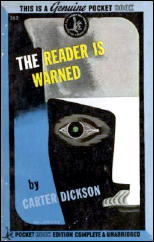
A decade or so ago I offhandedly pronounced The Reader Is Warned the best John Dickson Carr novel in the Sir Henry Merrivale series (written under Carr’s pseudonym Carter Dickson). After rereading it I would say I prefer the plainer and comparatively more sober courtroom classic, The Judas Window, but I still rate The Reader is Warned quite highly.
What people rightly love about The Reader is Warned is its exceptional impossibility and the sinister idea of “teleforce.” A mysterious psychic, Herman Pennik, pronounces that one of the people at a country house gathering will die at a certain time; and, sure enough, that person does die.
No indication of how the man came to die can be found. Pennik helpfully declares he killed the man psychically, through the operation of teleforce.
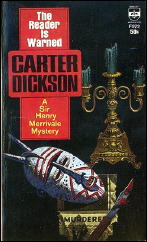
The next day, the man’s widow challenges Pennik as a fraud and he, nettled by the challenge, tells her that she too will die by the means of his teleforce. And she does indeed die. But how she came to die is yet another mystery. Could it really have been due to teleforce?!
One can think of thrillers with outlandish premises like this one that ultimately disappoint, but, amazingly, Carr comes up with a plausible (well, by Golden Age standards, anyway) and fairly-clued solution.
The resolution, which involves a rather melodramatic and implausible trap and a quite incredibly garrulous murderer, is the main weakness of the tale, I think. But the “teleforce” idea that the tale is built around is a brilliant, bravura device and the last lines of the book are unusually thoughtful for Carr (if perhaps a bit optimistic — one thinks of the advent of atomic weaponry).
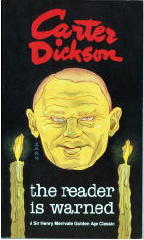
Despite my praise of this book a decade ago, in the intervening years I actually had forgotten the culprit and the method. (I find I often forget those details in Carr, but never in Christie.) On the rereading, I saw indications of who the murderer might be be, but I had trouble with the motive question, because I missed another point completely. But it is all is fairly clued, I maintain!
As for the method, I was pleased to find it rather John Street-ish. In fact, is some ways the novel is similar to one by Major Street from the same year. Since the two men were working on Drop to His Death/Fatal Descent at this time, I suspect they may have discussed the particular murder method in Reader as well.
Whatever input Street may or may not have on the murder method, the exuberant narrative is all John Dickson Carr. The Reader Is Warned is one of Carr’s most brilliantly constructed and engagingly told detective novels.
Editorial Comment: Curt has recently been re-reading a number of books by John Dickson Carr. This is the sixth, and currently the last in a series of reviews he wrote as a result. He Wouldn’t Kill Patience, also as by Carter Dickson, was the fifth, and you can read it here.
Tue 20 Jul 2010
REVIEWED BY WALTER ALBERT:
THE LAST OUTLAW. RKO, 1936. Harry Carey, Hoot Gibson, Tom Tyler, Henry B. Walthall, Margaret Callahan. Director: Christy Cabanne. Shown at Cinecon 27, Hollywood CA, September 1993.
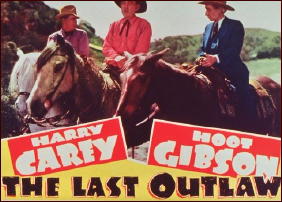
One of the sleeper hits of the convention. Harry Carey (Sr.) is released from prison after serving a thirty-five year sentence for bank robbery.
Carey is initially bewildered by the world he finds outside but soon discovers that crime hasn’t changed all that much. In an unlikely alliance with the lawman who had sent him to prison and with a new, younger friend (Hoot Gibson), Carey dons his pistols, saddles up and goes after the varmints who’ve done him wrong.
A great shoot-out at a canyon cabin is the perfect conclusion to this delightful, touching portrait of men living by an older code that shows up the inadequacy of the new order.
This was a remake of a 1919 silent that starred Carey, and was written and directed by John Ford. Harry Carey, Jr. had planned to attend the showing, but illness forced him to cancel his appearance.
Editorial Comment: This movie was released on video cassette, but it has not appeared as a commercial DVD, to my knowledge.
Mon 19 Jul 2010
A 1001 MIDNIGHTS Review
by Max Allan Collins:
HARRY GREY – The Hoods. Crown, hardcover, 1952. Paperback reprint: Signet Giant S999, 1953; several later printings. Film: 1984, as Once Upon a Time in America. Director: Sergio Leone.
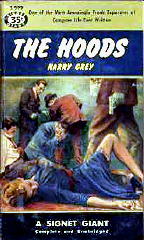
This sprawling novel chronicles the career of a mob of Jewish gangsters from New York’s Lower East Side, from their beginnings as a kid gang to their rise in the world of big-time organized crime.
The narrator is Noodles the Shiv, whose intelligence and sensitivity outdistance his compatriots Maxie, Patsy, Dominick, and Cockeye, but whose deeds are every bit as cold-blooded.
Grey’s novel is exciting, with various heists and gang-war incidents vividly portrayed, and his portraits of mobsters are believable, backing up the author’s claim to be “an ex-hood himself,” as Mickey Spillane’s cover blurb on the 1953 Signet paperback edition puts it. But the episodic nature of the book makes The Hoods a fast-moving novel that lacks narrative drive.
The Hoods was a paperback best seller, going through several editions and many printings, but its latter-day claim to fame is as the source for Italian director Sergio Leone’s controversial film Once Upon A Time in America, the screenplay of which was largely written by American mystery writer Stuart Kaminsky.
Leone’s magnificent gangster epic (starring Robert DeNiro as Noodles — released in a restructured, truncated version as well as in its full 277 minutes of running time) seems destined to be the subject of discussion among film buffs for decades to come.
Inexplicably, the “movie tie-in” edition published by New American Library was a novelization of the film, rather than a reissue of Grey’s original novel.
Grey’s other two novels, Call Me Duke (1955) and Portrait of a Mobster (1958), are also gangster tales, the latter novel a fictionalized autobiography of Dutch Schultz.
———
Reprinted with permission from 1001 Midnights, edited by Bill Pronzini & Marcia Muller and published by The Battered Silicon Dispatch Box, 2007. Copyright © 1986, 2007 by the Pronzini-Muller Family Trust.
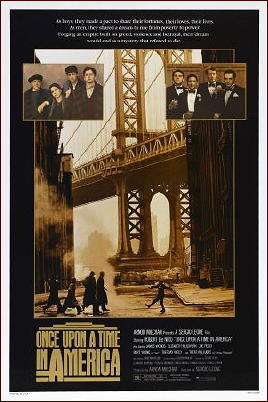
Mon 19 Jul 2010
Posted by Steve under
ReviewsNo Comments
REVIEWED BY TINA KARELSON:
JULIE KRAMER – Stalking Susan. Doubleday, hardcover, July 2008. Reprint paperback: Anchor, June 2009.
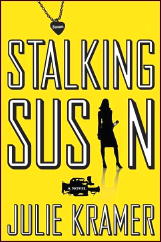
First in the series following the adventures of investigative reporter Riley Spartz, Stalking Susan is set in the Twin Cities.
Returning to work at the TV station after being widowed and going through a rough mourning period, she hopes to revive her flagging career by finding a serial-killer link between murder victims connected only by their first name, Susan, and the month and day on which they were killed, November 19.
The plot is clever, and Riley untangles the mystery cleverly and tenaciously. The Minneapolis/St. Paul setting is accurately portrayed, and the characters are reasonably engaging, though Riley is a rather conventional mystery heroine: independent, 30-something, saddled with a tragic romantic past — and of course her late husband and her current would-be suitor had or have careers in law enforcement.
The author, an investigative producer, visited the March meeting of Saints & Sinners, my local book club, to discuss both this and the second in the series, Missing Mark. The third, Silencing Sam, will be released in hardcover this summer.
Mon 19 Jul 2010
Reviewed by DAVID L. VINEYARD:
ERIK LARSON – Thunderstruck. Crown, October 2006. Trade paperback: Three Rivers Press, September 2007.
Within twenty-four hours Captain Kendall would discover that his ship had become the most famous vessel afloat and that he had become the subject of breakfast conversation from Broadway in New York to Piccadilly in London. He had stepped into the intersection of two wildly disparate stories, whose collision on his ship in this time, the end of the Victorian era, would exert influence on the world for the century to come.
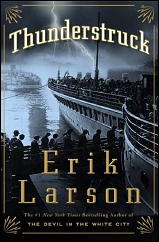
Alfred Hitchcock was so fascinated by it that he included elements in two of his films, Rear Window and Rope. As it was happening, then Home Secretary Winston Churchill had his home wired with the new Wireless technology so he could follow the case even when he as away from the Home Office.
It was the basis for novels by Ernest Raymond and Francis Isles among others, and even Raymond Chandler refers to it in one of his novels. Head of Scotland Yard’s Murder Squad, Frank Froest, later a mystery writer, was involved. It made the career of the young forensic genius Bernard Spilsbury who would later help catch George Joseph Smith, the Bath Murderer, and help convict Christie, the Rillington Place murderer.
It was the case of the young century, and perhaps the first worldwide news event followed by millions as it unfolded virtually live before them. It was highlighted by one of the most brutal and bloody murders in history and a spectacular race across the Atlantic monitored by fascinated readers across the world.
Today the name Dr. Crippen still brings up images of a mild mannered little man, his beautiful lover, and a dogged Scotland Yard Inspector in the chase of his life.
Erik Larson, whose earlier book The Devil in the White City, was the story of serial killer H. H. Holmes and the 1893 Chicago World’s Fair, combines in Thunderstruck the story of Gugliemo Marconi, the creator of the wireless, and Hawley Crippen, one of the most notorious murderers of the Twentieth Century, and how their two stories came together to foil a nearly perfect murder and give birth to modern communications, and in one sense the modern world.
Hawley Crippen was an American eye doctor living in London and in a bad marriage. When his wife Cora disappeared, the facts did not add up and the police began to suspect something was wrong.
Gugliemo Marconi was a brilliant but troubled inventor obsessed with the idea that radio waves could be transmitted through the airwaves without traveling through wires — from a transmitter to a receiver. His invention would transform the world, but it would take the spectacular Crippen case to demonstrate its potential to the world at large.
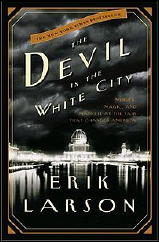
The two stories came together on a British ship, The Montrose, commanded by Captain George Kendall. Hawley Crippen and his mistress Ethel La Neve had disappeared, sought by the police, when Captain Kendall noticed something odd about two of his passengers, Mr. Robinson and son.
Armed with his suspicions Kendall used the Marconi as the wireless was known to contact the authorities, and set off one of the most famous pursuits in criminal history — one that would not have been possible without Marconi’s invention.
Imagine if you can the pursuit of O.J. Simpson’s white Bronco going on for days across the breadth of the Atlantic.
Even the cleverest mystery writer would have trouble coming up with a scenario as improbable as what followed. Inspector Walter Dew, in charge of the case, boarded the Laurentic, a sister ship of the Montrose, in a race to reach Canada before Crippen, so the doctor and Ethel LaNeve could be arrested on the Montrose — which was British territory as long as it was at sea.
(There was some concern that had they reached Canada, there may not have been sufficient evidence for their extradition.)
What made this case unique was that the world press traveled in his wake, and every aspect of this chase was wired hourly to the breathless world, while in London the noose that would hang Crippen drew taut as the new science of forensics pieced together the story of the brutal death and bizarre fate of Cora Crippen’s corpse.
Meanwhile on board the Montrose, Kendall and his officers worked to keep Crippen and La Neve and the other passengers ignorant of the whirlwind of events surrounding them, while Dew raced to pass them and arrive in Canada first.
Larson is a master at orchestrating the events so they read as compellingly as any novel, and it comes down to perhaps the most famous example of British phlegm since African explorer Henry Morton Stanley’s “Dr. Livingstone, I presume?”
Dew had come aboard the Montrose with the ships pilot in disguise wearing the pilot’s cap:
Kendall watched Dew. The captain looked for some sign that Dew recognized the passenger below. The inspector said nothing. Kendall led the party to his cabin and sent for Mr. Robinson. A few moments later the man appeared, looking unconcerned and cheerful.
Kendall stood. Discreetly he put his hand in his pocket and gripped the revolver. He said, “Let me introduce you.”
Dew stepped up, still in his cap. The passenger smiled and held out his hand. Dew took it and with his free hand took off his cap. He said quietly, “Good morning, Dr. Crippen.”
The expression on the passenger’s face changed rapidly, Dew wrote. First came surprise, then puzzlement, then recognition. Finally, in a voice Dew described as being ‘calm and quiet,’ Crippen now said, “Good morning, Mr. Dew.”
Agatha Christie could not have written it better.
Larson follows up on the fates of those involved. The spectacular trial that became an international sensation, Dew’s retirement after his most famous case, Captain Kendall’s adventurous career that reads like a Conrad novel, Mussolini praying at the beside of the dead Marconi, the still unanswered questions regarding the murder, and a final touching interview with Ethel La Neve shortly before her death.
Thunderstruck reads like the best of novels, but has the weight of truth behind it. Carefully crafted and brilliantly written, it is a true crime story that compares with the best fiction for twists, turns, and moments of crime-solving worthy of Dr. Thorndyke or Sherlock Holmes.
A fascinating look at one of the key events in the birth of the Twentieth Century and modern communications, and in the wake of cell phones, ipods, instant video, and world wide satellite communications — a reminder that the world was once much larger.
Though Jung might have been right when he said that it was made of glass for a murderer, the birth of the modern world made that metaphor reality for Hawley Crippen.
Mon 19 Jul 2010
Posted by Steve under
Reviews[9] Comments
IT IS PURELY MY OPINION
Reviews by L. J. Roberts
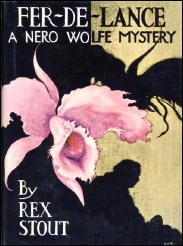
REX STOUT – Fer-de-Lance. Farrar & Rinehart, hardcover, 24 October 1934. Preceded by an abridged version in The American Magazine, November 1934, as “Point of Death.” Reprinted many times, including once with a title change: Meet Nero Wolfe. Mercury Mystery #37, digest ppbk, abridged, 1941.
Film: Columbia, 1936, as Meet Nero Wolfe (with Edward Arnold and Lionel Stander as Nero Wolfe and Archie; director: Herbert Biberman).
Genre: Private investigator. Leading characters: Nero Wolfe/Archie Goodwin; 1st in series. Setting: New York City, 1934.
First Sentence: There was no reason why I shouldn’t have been sent for the beer that day, for the last ends of the Fairmont National Bank case had been gathered in the week before and there was nothing for me to do but errands, and Wolfe never hesitated about running me down to Murray Street for a can of shoe-polish if he happened to need one.
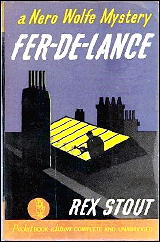
Nero Wolfe and Archie Goodwin’s first published case becomes one of two parts; a young woman hires Wolfe to find her missing brother, and a college president has been murdered on the golf course. The link: a golf club.
The fun of reading Nero Wolfe is not the plot, although this one did have a good twist to it, but for the characters. On one hand, you have Wolfe, the corpulent, beer drinking, gourmand who has orchids cultivated in his attic conservatory.
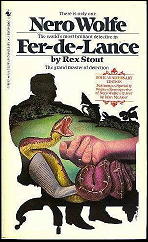
He is well-read, well-spoken, often difficult to deal with, yet a brilliant deductive and intuitive thinker. On the other hand is Archie, orphaned as a child, lives in Wolfe’s brownstone, uses common English, and drinks milk.
The two characters are complete opposites but one immediately senses the underlying respect and affection which goes beyond a working relationship. It is the dialogue and relationship of these two characters that make the book, and series, work.
An interesting aspect to this book is that we meet the characters seven years in, so references to previous cases abound. In most cases, this would annoy me as there would be that sense of something missing.
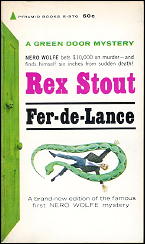
Stout, however, is so adept in his writing and his characters are so well developed, the previous case references simply become historical notations. Stout was writing in present time, now history to us.
Because of that, we are presented a living sense of time, place, social mores and behavior. There were certain expressions, common at the time. They are objectionable to us today and serve as a reminder of our advancement from the past.
One element with which I did have a problem was some of Archie’s slang. There were times I had to re-read sentences or paragraphs to understand what he was saying.
It was fun to go back and re-visit Nero and Archie, but not so much as to make me want to reread all the books. However, if you’ve never read Rex Stout, I do recommend picking up at least a few of his books.
Rating: Good.
Sat 17 Jul 2010
Posted by Steve under
Reviews[3] Comments
THE BACKWARD REVIEWER
William F. Deeck
RUFUS KING – The Steps to Murder. Doubleday/Crime Club, hardcover, 1960. No paperback edition.
The first tale in this collection — more novelette than short story — gives the book its title. A rich amoral woman who manipulates people for her greater good, using as her excuse her presumed ugliness, has lost her to some extent blackmailing hold over her husband. Quite insupportable, so his death is necessary.
The rest of the stories are set in Halcyon, Fla., King’s fictional small town, “composed of the modestly retired, seasonal tourists, native crackers, horse-happy railbirds, amiable bookies, and glazed divorcees.”
O.K., not so small, perhaps.
An open-and-shut case of murder interests Monsignor Lavigny. Enlisting the aid of St. Jude, the good Father comes up with an alternative explanation that convinces Stuff Driscoll, in “The Patron Saint of the Impossible.”
In “Murder on Her Mind,” a jet-setter comes to a psychiatrist to make sure that her brother-in-law will be declared sane so he can remain at large and kill her sister. She is, so to speak, hoist by her own petard.
An embezzler commits suicide in “A Little Cloud. . . Like a Man’s Hand.” Or does he? Stuff Driscoll, without the Monsignor, solves this one.
Another ugly woman, rich now that her family has been wiped out in a boating accident, faces a definite death in the near future from natural causes and a possibly more immediate death from unnatural causes in “Rendezvous with Death.”
While everybody liked Jackson, Jackson didn’t like anybody. He also didn’t like the idea of being executed for murder, but murder was necessary to further his interests in “A Borderline Case,” borderline in more ways than one.
Six fine stories, a couple fair play, all with the special atmosphere of menace that King created so well.
— From The MYSTERY FANcier, Vol. 11, No. 2, Spring 1989.
Bibliographic Data: The title story was original to this book and “Murder on Her Mind” first appeared in Mike Shayne Mystery Magazine. The other four came from Ellery Queen’s, not surprisingly.
Previously on this blog:
Museum Piece No. 13 (reviewed by Bill Deeck)
Rufus King’s Florida short stories (by Mike Grost)
Holiday Homicide (reviewed by Mike Grost)
Design in Evil (reviewed by Mike Grost)
Malice in Wonderland (a 1001 Midnights review by George Kelley & Bill Pronzini)
Murder by Latitude (a 1001 Midnights review by George Kelley)
Design in Evil (reviewed by Bill Deeck)
Sat 17 Jul 2010
A 1001 MIDNIGHTS Review
by Max Allan Collins:
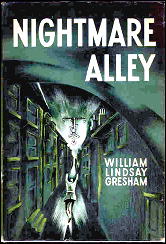
WILLIAM LINDSAY GRESHAM – Nightmare Alley. Rinehart & Co., 1946. Softcover reprints include: Signet #738, 1949, several printings; Carroll & Graf, 1986; Fantagraphics Books, graphic novel, February 2003; New York Review of Books, trade paperback, April 2010. Reprinted in Crime Novels : American Noir of the 1930s and 40s (Library of America).
Film: 20th Century Fox, 1947 (Tyrone Power, Joan Blondell; director: Edmund Goulding).
The underside of show business is given a brutal and yet somehow affectionate examination by William Lindsay Gresham in this justly famed novel. Carnival life is vividly, lovingly portrayed: “Swearing, steaming, sweating, scheming, bribing, bellowing, cheating, the carny went its way.”
Even his protagonist, Stan Carlisle, the slick, self-serving grifter, is viewed with world-weary compassion as Gresham leads him to his inevitable, much-deserved doom.
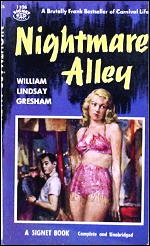
Young, ambitious Stan Carlisle has a small-time job in a traveling carnival, but by worming his way into the good graces — and bed — of mind reader Zeena, he learns the tricks of the “mentalist” trade.
Along the way he accidentally causes the death of Zeena’s dipsomaniac husband, giving him wood alcohol; and he turns the beautiful, virginal, father-fixated Molly into his mistress and reluctant partner in crime.
Though Zeena’ s tarot cards have predicted Stan’s eventual downfall, the Great Stanton rises to certain heights in vaudeville. But he is not satisfied, and involves himself and Molly in the even more lucrative “spook racket”: The Great Stanton becomes the Reverend Stanton and begins bilking the wealthy, preying upon their lost loves and buried guilts.
Then he meets and falls in love with Dr. Lilith Ritter, a psychiatrist to whom he bares his breast, and soon the seductive Lakeshore Drive psychiatrist is helping him plan one big last score.
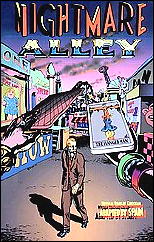
Nightmare Alley is not a perfect book — Gresham’s poetic prose at times turns a shade of purple, and his Freudian explanations for the behavior of various characters are pat and a little dated; but few tough-guy crime novels are more powerful than this, and never have “the lower depths of show business” been explored with a more knowledgeable and sadly sympathetic eye.
Gresham, whose own suicide is foreshadowed in the suicidal impulses of several of the characters in Nightmare Alley, was fascinated with the sleazier aspects of the entertainment world.
Just as convincing as his depiction of carnival life is his inside look at the phony medium racket, which he further explored in his nonfiction work Houdini (1959).
His only other novel, Limbo Tower (1949), is a hospital tale with criminal overtones
———
Reprinted with permission from 1001 Midnights, edited by Bill Pronzini & Marcia Muller and published by The Battered Silicon Dispatch Box, 2007. Copyright © 1986, 2007 by the Pronzini-Muller Family Trust.
« Previous Page — Next Page »


















